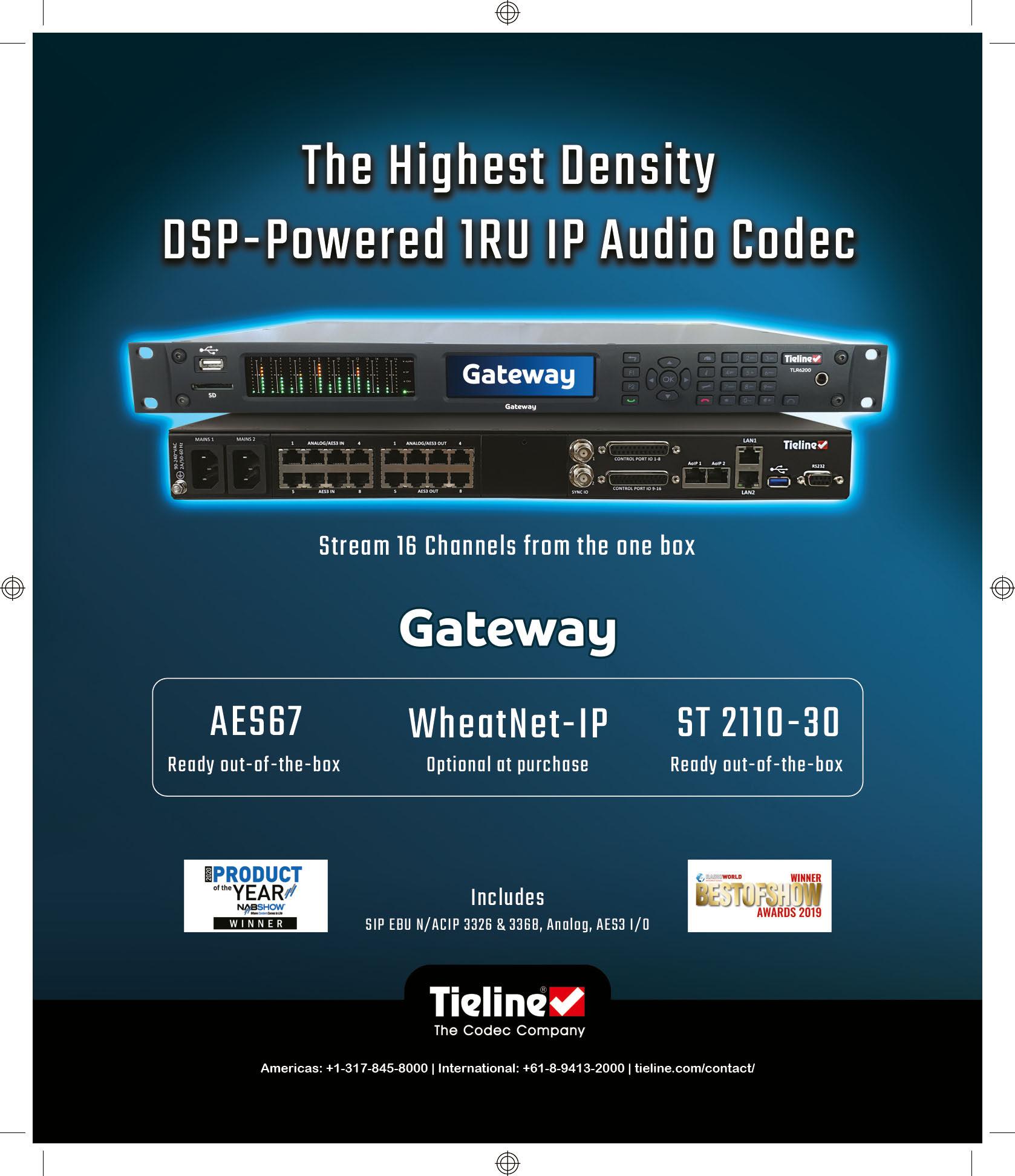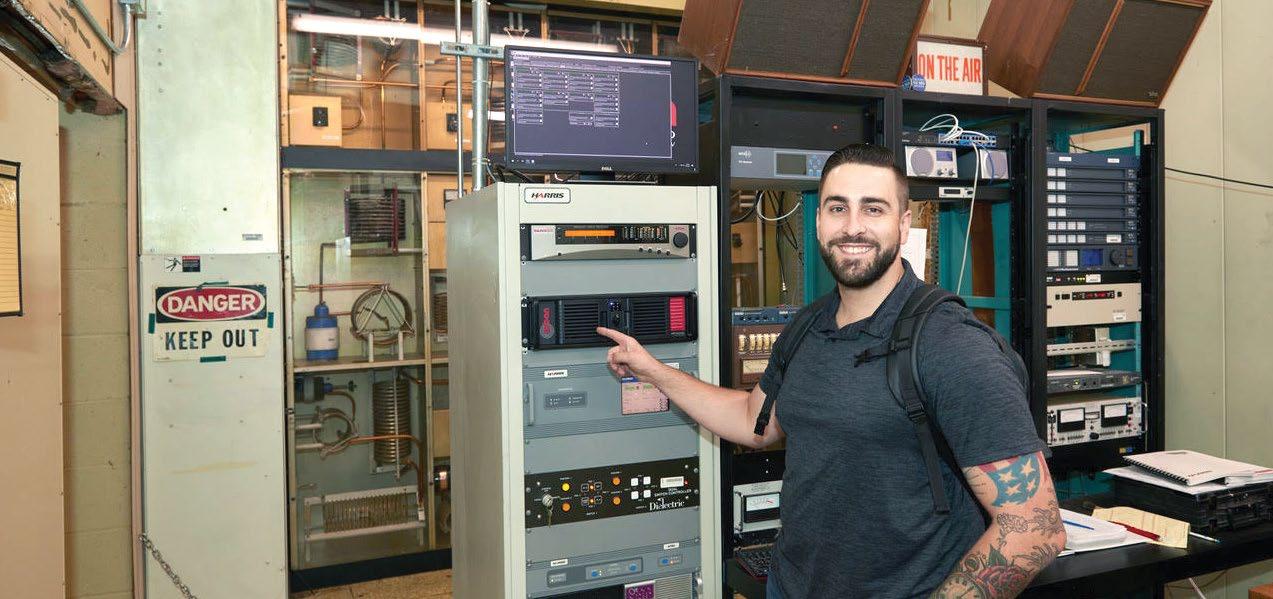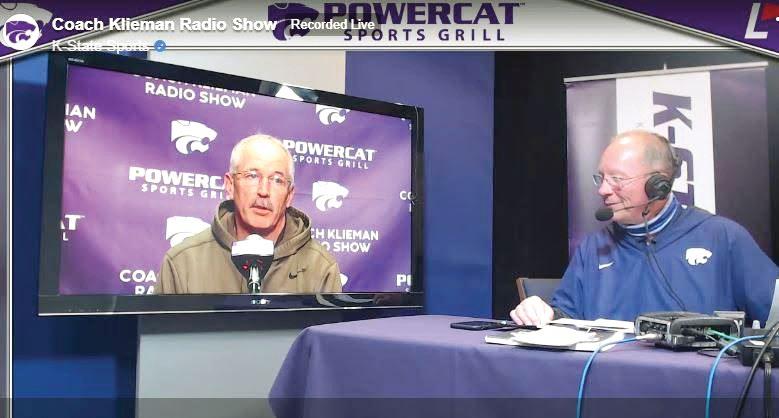
26 minute read
Persons: “I Never Had a Plan B
www.radioworld.com
FOLLOW US www.twitter.com/radioworld_news www.facebook.com/RadioWorldMagazine
CONTENT Managing Director, Content Paul J. McLane, paul.mclane@futurenet.com, 845-414-6105 Senior Content Producer — Technology Brett Moss, brett.moss@futurenet.com Technical Advisors Thomas R. McGinley, Doug Irwin Technical Editor, RWEE W.C.“Cris” Alexander Contributors: Susan Ashworth, John Bisset, James Careless, Ken Deutsch, Mark Durenberger, Charles Fitch, Travis Gilmour, Donna Halper, Craig Johnston, Alan Jurison, Paul Kaminski, John Kean, Peter King, Larry Langford, Mark Lapidus, Jim Peck, Mark Persons, Stephen M. Poole, James O’Neal, Rich Rarey, Jeremy Ruck, John Schneider, Randy Stine, Tom Vernon, Jennifer Waits, Chris Wygal Production Manager Nicole Schilling Managing Design Director Nicole Cobban Senior Design Directors Lisa McIntosh and Will Shum
ADVERTISING SALES Senior Business Director & Publisher, Radio World John Casey, john.casey@futurenet.com, 845-678-3839 Publisher, Radio World International Raffaella Calabrese, raffaella.calabrese@futurenet.com, +39-320-891-1938
SUBSCRIBER CUSTOMER SERVICE To subscribe, change your address, or check on your current account status, go to www.radioworld.com and click on Subscribe, email futureplc@computerfulfillment.com, call 888-266-5828, or write P.O. Box 282, Lowell, MA 01853.
LICENSING/REPRINTS/PERMISSIONS Radio World is available for licensing. Contact the Licensing team to discuss partnership opportunities. Head of Print Licensing Rachel Shaw licensing@futurenet.com MANAGEMENT Senior Vice President, B2B Rick Stamberger Chief Revenue Officer Mike Peralta Vice President, Sales & Publishing, B2B Aaron Kern Vice President, B2B Tech Group Carmel King Vice President, Sales, B2B Tech Group Adam Goldstein Head of Production US & UK Mark Constance Head of Design Rodney Dive
FUTURE US, INC. 11 West 42nd Street, 15th Floor, New York, NY 10036
All contents ©Future US, Inc. or published under licence. All rights reserved. No part of this magazine may be used, stored, transmitted or reproduced in any way without the prior written permission of the publisher. Future Publishing Limited (company number 02008885) is registered in England and Wales. Registered office: Quay House, The Ambury, Bath BA1 1UA. All information contained in this publication is for information only and is, as far as we are aware, correct at the time of going to press. Future cannot accept any responsibility for errors or inaccuracies in such information. You are advised to contact manufacturers and retailers directly with regard to the price of products/services referred to in this publication. Apps and websites mentioned in this publication are not under our control. We are not responsible for their contents or any other changes or updates to them. This magazine is fully independent and not affiliated in any way with the companies mentioned herein.
If you submit material to us, you warrant that you own the material and/or have the necessary rights/permissions to supply the material and you automatically grant Future and its licensees a licence to publish your submission in whole or in part in any/ all issues and/or editions of publications, in any format published worldwide and on associated websites, social media channels and associated products. Any material you submit is sent at your own risk and, although every care is taken, neither Future nor its employees, agents, subcontractors or licensees shall be liable for loss or damage. We assume all unsolicited material is for publication unless otherwise stated, and reserve the right to edit, amend, adapt all submissions. NEWS radioworld.com | radioworld.com | RADIOWORLDRADIOWORLD Persons: “I Never Had a Plan B” Recipient of lifetime achievement award is a mentor and inveterate storyteller ◗NEWSMAKER
BY MARK PERSONS
Prior to this autumn, only nine people had received a lifetime achievement award from the Society of Broadcast Engineers.
Mark Persons is the 10th. The award was presented to Persons during an SBE online membership meeting and award ceremony. Radio World is proud that Mark is a longtime contributor and valued member of the RW family.
We asked him to share thoughts and memories of his career.
This story starts in the mid-1920s when my father, Charles B. Persons, became a radio broadcast engineer at age seventeen at WEBC Radio in Duluth, Minn. — the only station in town. It grew to become part of a seven-station network before he left to build our own WELY in Ely, Minnesota, in 1954.
It was a great time for me to learn electronics and Ohm’s Law, turn knobs on the 250-watt AM transmitter and build Heathkit equipment at age seven. That station was later owned by well-known CBS journalist Charles Kuralt.
I became a radio amateur in 1963, the year before our family built and owned KVBR Radio in Brainerd, Minn. At age 17, it was a natural for me to wire the transmitter and studios with the latest innovation: cartridge tape decks.
There was never a question about my future. Broadcast engineering was not just a job, it was a lifestyle.
Three years later, I found little interest in college, which taught nothing about electronics. I enlisted in the U.S. Army and taught electronic repair at Fort Monmouth, N.J. Then it was off to Vietnam to do high-tech electronic repair. The plan was to fulfill the obligation to our country so I could go back to broadcast engineering in 1969.
Work ramped up in the 1970s, when engineers were let go from radio stations because the FCC no longer required them. Soon I was a full-time independent radio broadcast engineer, building 12 new stations and repairing countless others. Good test equipment helped solve the problem of a noticeable hearing loss from my service in Vietnam.
TREAT IT LIKE YOUR OWN
Coming from a family ownership situation, I treated each station as if it were my own. The attachment was personal because the work was mostly for clients who believed in engineering. A message on our telephone recorder said, “I am out working on one of America’s great radio stations.”
My wife Paula came into the business full-time after working as a legal secretary. She has a keen sense of character and it paid off. Her job was to run the office, freeing me to go out in the field 60 hours a week at 40 or more clients.
Once I was almost hit head-on by a drunk driver at 2 (continued on page 4)
PERSONS
(continued from page 3)
a.m. but went in a ditch instead.
I never wanted to own a station. The challenge of installing, troubleshooting and repairing equipment was more than enough. It is a great feeling to get all electrons flowing in the same direction, so to speak.
Along the way, two engineers tried to get into our “territory” by promising lower prices. (They never asked; we might have given them a few stations.) In the end, the clients came back to us for dependable results.
We lost less than $4,000 to bad debts over the years. I remember two times when a customer was slow to pay and then called looking to send me to a transmitter right away. Paula’s response in one case was, “You are no longer a customer!” That day I drove right by his downed transmitter while coming back from another project and did not stop.
That dented our reputation a bit, but we stuck by our principles. As Paula said, “We are not a bank that loans money.”
My first AM directional was a fivetower array in 1982 at Hibbing, Minn. It was built from parts, including a custom phasor controller. The phasor was, and still is, a room in a building with an eight-foot-high aluminum wall with inductors, capacitors and contactors on the backside. Coupling units were built open-panel style at each tower.
The client liked this so much that he had me build a three-tower array in Cape Coral, Fla., and a three-tower in Carmel Valley, Calif. All 10 kW stations. He gave me the freedom to design and build what I thought was best for each job.
Then there were more than 40 C-Quam AM stereo installations. One of them was at the Cape Coral station,
In the field, at KLOH in 1988.
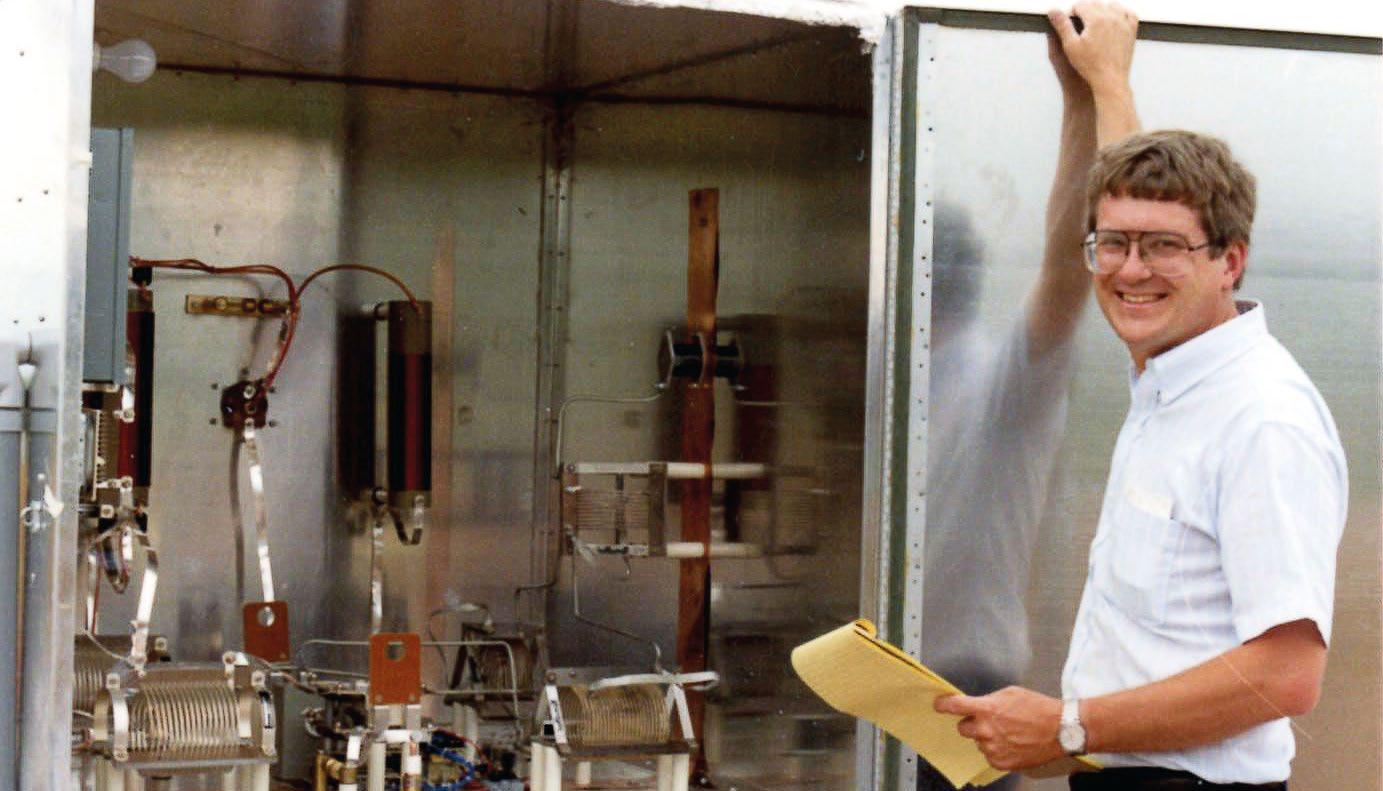
which introduced the “oldies” format in 1986. It placed second in the Arbitron after being on the air only six weeks.
SHARING KNOWLEDGE
Never satisfied, I modified equipment, then designed and built many electronic gadgets used in stations.

That evolved into designing prod-
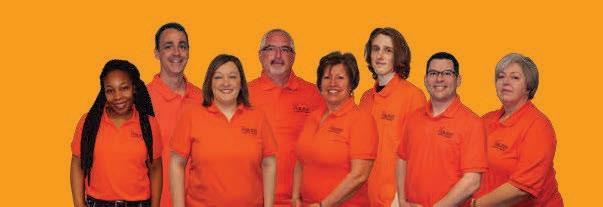
SUPPORT MATTERS Great support means finding the right support person at the right time
ucts for manufacture such as the Programmer 3A Live Assist Program Controller and the Max-Tel Remote Broadcast Telephone, later updated to be the Max-Z and ZII.
I have always enjoyed telling stories. Approximately 188 of my articles have been published, mostly in Radio World. Then there is the popular Tech Tips section on my http://mwpersons.com website, where free answers are given to radio broadcast engineering problems.
We retired when I was 70 and mentored two engineers to take over the territory. There was no charge except for a few hours of classroom training to bring them up to speed on measuring AM impedance etc. Then the SBE mentor program added two mentees in other parts of the country. I also became a member of the National Radio Systems Committee’s AM Improvement Working Group.
It is volunteer work, and it feels good to continue to be a part of the broadcast industry that I grew up and prospered in.
The plan is to keep writing articles for Radio World in the quest of spreading knowledge to broadcast engineers everywhere. Radio has a great future and needs good engineers to keep it going.
Regarding the SBE Lifetime Achievement Award: I had no intention of seeking that or any other accolade. Life just worked out that way while keeping the “families” of stations the best they can be. Paula says she will bury me next to a transmitter when the time comes.
Comment on this or any article. Write to radioworld@futurenet.com.
The SBE John H. Battison Award for Lifetime Achievement recognizes and pays tribute to individuals for their dedication, lifelong achievement and outstanding contribution to broadcast engineering, according to the society. Prior recipients are Benjamin Wolfe and James Wulliman (1995), Philo and Elma Farnsworth (1997), Morris Blum (1998), Richard Rudman (2002), Richard Burden (2005), John Battison (2006) and Terry Baun (2010). You can watch the replay of the membership meeting and awards ceremonies on the SBE YouTube channel.

NOVEMBER 25, 2020
NEWS Online Resources Blossom at SBE . . . . . 1 TPTP Will Support New Engineers . . . . . 1 Persons: “I Never Had a Plan B” . . . . . . 3 Groups Will Model IT Like a CDN . . . . 10
12

FEATURES Workbench: A Lineman’s
Tips to Ground an STL Pole . . . . . . . 12 CHU, Canada’s Time Station . . . . . . . . 14 Belizaire Reflects on Race, Success . . . 18 IBA Tackles Needs of
Independent Stations . . . . . . . . . . . . 20
24

BUYER’S GUIDE Z/IPStream R2 Offers
Power, Reliability . . . . . . . . . . . . . . . 22 Comrex Opal Polishes
Podcast Interviews . . . . . . . . . . . . . . 24 StreamGuys Assures Uptime for ARN . 26
30 TPTP

(continued from page 1)
any organization concerned with finding and developing our next generation of broadcast technical professionals.”
Over the years, SBE has developed and delivered programs and support to those already employed in the profession. “Unfortunately, those not intimately involved in the technical side of our industry aren’t truly aware of what and how we do this,” he said.
“They are however acutely aware there’s less and less folks available to perform technical work critical to their enterprise, and that sources traditionally geared to prepare new techs — trade schools and electronic vocational training programs, and on-the-job learning opportunities — have either shrunk or disa ppeared completely.”
SBE’s leaders considered how to fill the gap.
“This was not just a technical issue. We would need to make everything user-friendly to both technical and nontechnical folks, or it could never get off the ground,” Morrill said.
COST AND BENEFITS
The cost for a person entering the program is $475. What do they receive for this?
First, they’ll be paired with a mentor, someone already in the technical side of the industry with a knowledge base and practical experience that will help to encourage and guide their learning process.
“In a group owner situation, this could be someone already in their employ at a market, regional or national level,” Morrill said.
“It may be someone affiliated with (continued on page 6)
SGrecast A cloud-based tool to easily create, manage and monetize your podcasts
New Dashboard! More Intuitive. Cleaner Look. Less Clicks.
Simplified Production Automatically Record and Convert Live Streams into Podcasts New Advanced API Automate Your Content Publishing & Management
New Reporting Integration Conveniently View Your Podcast Data in the Publishing Dashboard New Waveform Editor Rearrange Multiple Audio Clips, Remove Ads, and More!

OPINION A History of Innovation, a Future of Growth . . . . . . . . . . . . . 29 Making PPM Encoding Easier . . . . . . . 30
Radio World (ISSN: 0274-8541) is published bi-weekly with additional issues in February, April, June, August, October and December by Future US, Inc., 11 West 42nd Street, 15th Floor, New York, NY 10036-8002. Phone: (703) 852-4600, Fax: (703) 852-4583. Periodicals postage rates are paid at New York, NY and additional mailing offices. POSTMASTER: Send address changes to Radio World, P.O. Box 282, Lowell, MA 01853.
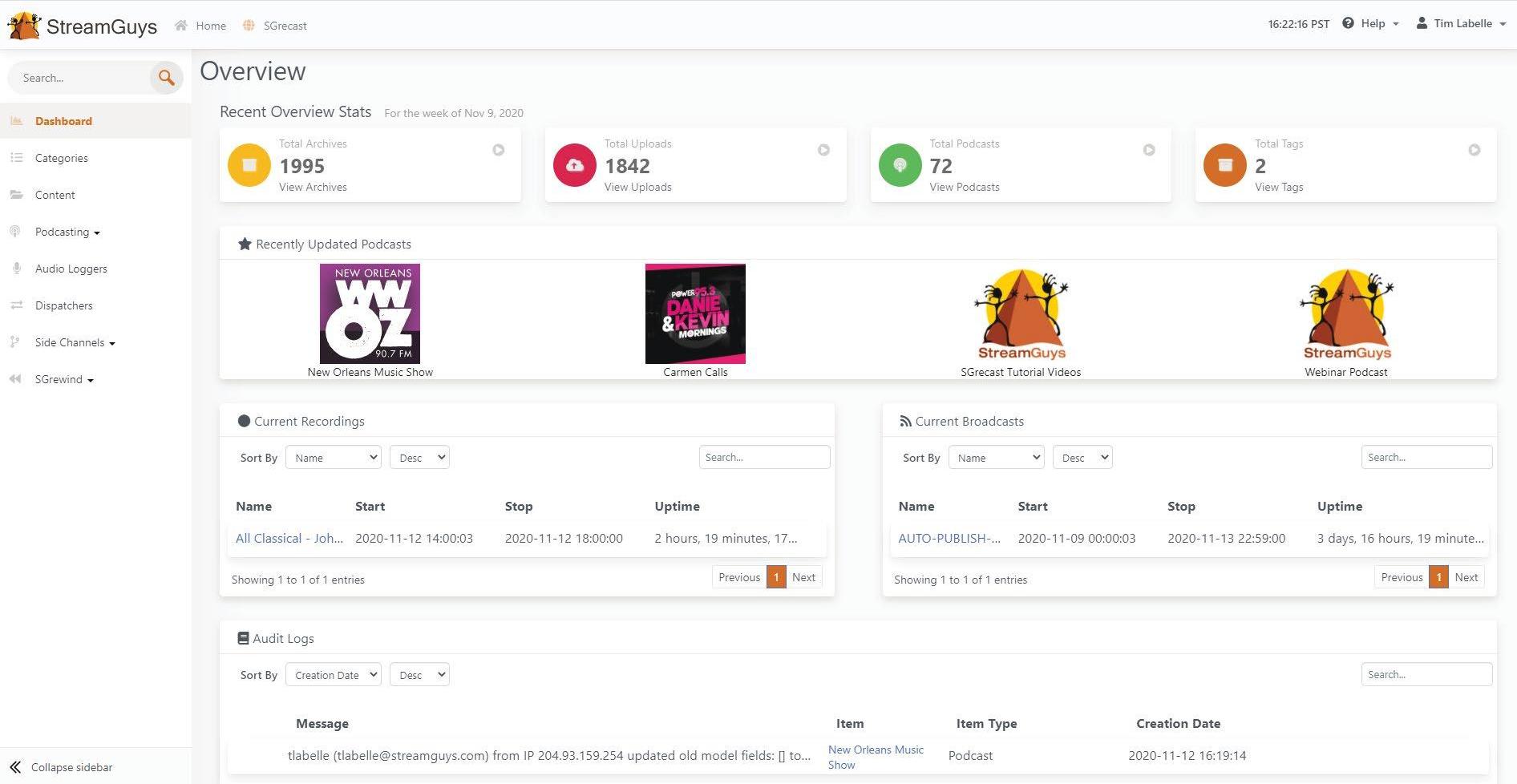
+1 (707) 667-9479 x1 | sales@streamguys.com


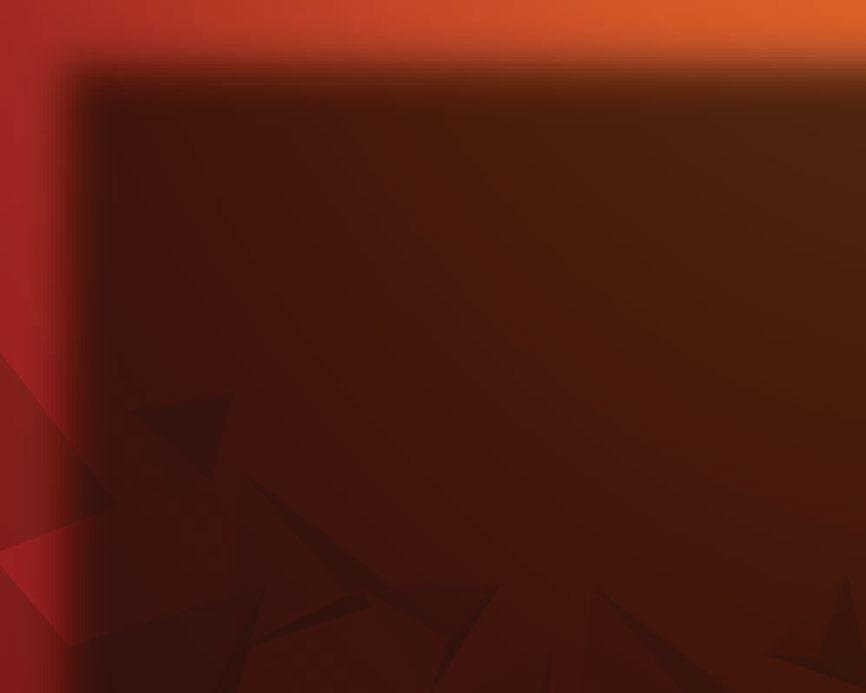
SBE
(continued from page 1)
throughout the pandemic — granted, in a modified form, observing the restrictions placed by the state of Indiana and the city of Indianapolis. But the office is open and functioning, with all programs ongoing.
We’d been doing webinars for some time. Like a lot of organizations, we were already in that virtual environment, so it wasn’t necessary to hurry and ramp up. But certainly we have increased that.
We have seen phenomenal engagement from our members in the webinars. As of last month we had twice as many participants as the year before, and we haven’t gotten to the end of the year yet.
Obviously our in-person events have been canceled, whether it’s an SBE-only event or related ones — the NAB Show being the biggie that a lot
TPTP
(continued from page 5) another organization, like a state broadcasters’ association, interested in supporting this effort for their membership. Or it could be a retired engineer looking to pay forward the support he or she received as a new entrant to our profession some time ago. The common denominator is a desire to see a new person succeed in their broadcast technology career.”
Second, the mentor will collaborate with their mentee to determine their grasp of the disciplines and technologies needed for their role using existing and enhanced tools like SBE CertPreview.
“Armed with this evaluation, the mentors can direct a mentees’ studies by curating the extensive archived SBE webinar series as well as new offerings that are always in development as technology evolves,” he said.
“Included with enrollment in the program, the mentee receives SBE Member Plus level access to the entire educational webinar library of the society for a year, including all new webinars. Mentee learning is further supplemented of our in-person outreach is centered around.
Many of our local chapters have gone to a virtual meeting environment. That’s a blessing and a curse, in some ways; everyone probably prefers that in-person fellowship and networking at a chapter meeting. But [we’ve seen] increased attendance in some larger areas where it’s just not easy to get across town to a 7 p.m. chapter meeting; that travel can be significant.
I know I have enjoyed attending many local chapter meetings because of Zoom around the country. ahead.”
A key component of the program is pairing the participant with a mentor.
they don’t know. with a copy of the recently published ‘SBE Engineering Handbook,’ providing a written resource that can be used for both their studies and future reference.”
Third, a natural byproduct of this effort will be preparation to write the Broadcast Technologist Certification exam for either AM/FM RW: It seems like in the last year or two, there’s been a real mushrooming of resources made available to your members. Pecena: Since day one of the SBE, professional development, continuing education, has been a priority. And as technology changes rapidly it creates opportunity for further programs.
Even before the COVID pandemic, we had been aggressively ramping up, particularly, our webinar programs. Those have been most popular with our members. You can attend at a prescribed
GVSeries
3.5 kW – 88 kW Digital/Analog FM


Getty Images/Hinterhaus Productions
date and time for that live presentation, — Geary Morrill or TV. That helps to demonstrate a mentees mastery of electronic fundamentals and relevant FCC rules.
Morrill said SBE is encouraging employers to invest in participation by their new hires.
“In return, it’s reasonable to ask for a commitment from the employee to but we see far more participation ondemand. Those are recorded and available to our members.
The feedback that we get from those programs is very positive.
RW: I understand you’ve got an updated IP networking series coming. Pecena: That is just one of the webinars planned.
One of the things that we have seen, not just in IP networking, is a need for more in-depth content. There’s a limit to what you can do in a webinar session, which we try to keep to an hour to an hour and 15 minutes.
So for many topics — beginning with our RF 101 series and advanced RF series, a lot of the IP content — we’ve gone to multiple-part webinars. There’s an AoIP series that, gosh, I’ve lost count of the number of parts, six to seven, maybe even eight parts.
That’s how we’re addressing more advanced topics, to have enough time to address those topics but at the same time
remain with the employer making this investment, for a mutually agreeable period, or to reimburse the employer’s hard cost if they should choose to withdraw. That way, both parties have a vested interest in the employee being successful, as they have ‘skin in the game.’”
Morrill said the effort involves education, mentorship and certification that already exist in SBE offerings but brings them together in a “guided” system rather than offering things a la carte.
“This is a huge benefit to the intended users because we realize folks who aren’t already technically proficient simply don’t know what they don’t know. And non-technical folks wanting to help don’t either.”
SBE will also provide support and training for volunteers to make their role effective and rewarding.
“A successful mentor doesn’t need to be a professional educator ... just be willing to take an active interest in bringing this next generation along.”
Details and registration information are expected to be announced after the New Year.
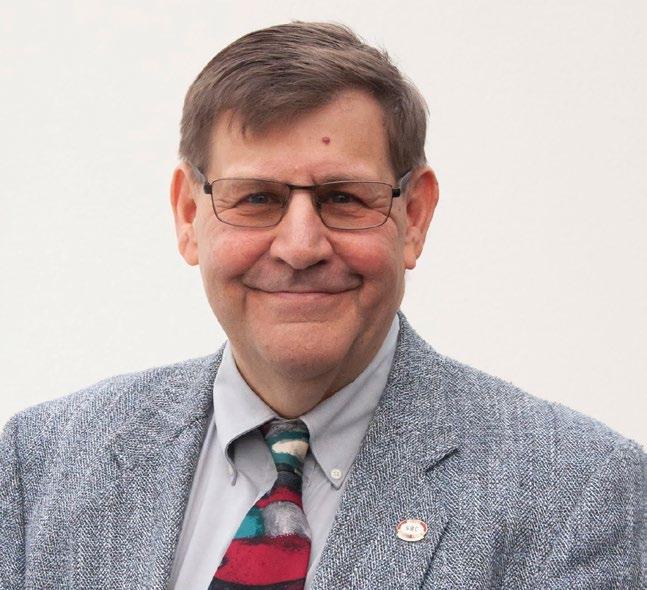
break them into manageable chunks of time. You could offer a full-day, eighthour seminar, but there’s not many broadcast engineers who have that kind of time to sit in front of the computer.
RW: You have a pretty big change with John Poray retiring as executive director, and Jim Ragsdale coming in. How do you feel about John leaving? Pecena: Certainly his announcement was a surprise; at the same time it was not a surprise. From the board aspect, we knew that John was going to be retiring soon, but when that announcement came at the first of this year, it still was a shock now that we had a date in front of us.
John has been the face of SBE for 28 years. A lot of growth has occurred over that time, from the office staff that keeps everything running, to the number of programs that are offered. It’s never enjoyable to lose someone with John’s tenure and experience and of course his dedication to the society.
Early in his career, when he came to SBE, he thought he’d probably be at SBE for five years and then move on to the next step up. And here we are 28 years later and he’s still with us.
We offer John sincere thanks and congratulations for his dedication to SBE and everything that he has done. I think it’s safe to say there’s not a program offered through SBE that does not have his personal touch on it in one way or the other. He’s a very engaged leader.
I suppose if you’re going to retire, there’s probably a good time to do that: when things are pretty good. Yes, we have some challenges that the industry presents and the COVID situation has presented. But we have a society that is in sound financial shape. We have successful programs. We have a dedicated and supportive staff that takes care of all of that day-to-day stuff.
If you’re going to say goodbye to 28 years, this is probably a good time to leave, at the top of things.
RW: How did the search go and what struck you about Jim Ragsdale? Pecena: Our response from potential candidates was a little overwhelming; I personally had felt that if we got maybe 10 applications we’re going to be good, and we had pushing 30. So then we had a different challenge in front of us. How do we weed through this?
We had a dedicated committee led by Joe Snelson, a former SBE president [who has experience in] the corporate environment. He did a really good job in leading that effort.
We boiled things down to three candidates and engaged in face-to-face interviews in Indianapolis. The three candidates were uniquely different but all viable for the position.
Jim was chosen unanimously by the committee. He did his homework on the SBE. He brought the best perspective of looking ahead. Granted, he was from outside the industry, but at the same time, he had ties to the broadcast industry through family members who were engaged in broadcasting for many years, and he brought solid financial management strengths, particularly in a nonprofit environment, as well as solid reference evaluations from previous roles.
Everyone felt he was that right fit for SBE. RW: What should we look for from SBE in coming months? Pecena: I think we step back and take a new breath and give Jim Ragsdale a time to get acclimated. We have several new programs that are launching, I don’t want to remotely suggest we’re just going to stop doing things; but give Jim an opportunity to get up to speed, making his own evaluations. He brings a solid financial background and [can make] his own assessments with that.
And this is strictly a personal feeling, but we probably need to revisit our strategic planning efforts. In our last event about three years ago, we came up with a plan, and many of the aspects of that plan have been implemented. You’ve noticed the new website, for instance; the need for that was identified in that strategic plan.
What was also identified but frankly has not happened has been some of our expanded outreach activities engaging in other related organization’s activities — whether it’s a state broadcast conference or local chapter events. Of course with the COVID situation, that kind of stuff went away. (continued on page 8)
@BrianOliger
Featuring:
Switchboard for easier connectivity
CrossLock for IP bonding and network management

For remotes | For home studios For anywhere the story (or life) takes you!

The preferred codec manufacturer of broadcasters everywhere
www.comrex.com info@comrex.com | +1 (978)784-1776
SBE
(continued from page 7)
So I think once he gets a solid footing by mid year, we need to reevaluate our strategic plan. Not necessarily do it all over again, though maybe that’s the best way to do it. In today’s fast changing environment. I’m not sure doing strategic planning every five years is the right time. Maybe it should be shortened a little bit.
Our focus, I think, will continue to be on education certification, our frequency coordination activities that are going on. You don’t necessarily hear a lot about frequency coordination, because it’s going on in the background, but there’s a lot of work that goes into that, particularly with the Department of Defense contract that SBE is involved in.
RW: The direction of membership trends is down over time. Pecena: Yes it is down, That was a big focus of our last strategic planning effort — ways to increase that membership, and that was the basis of our outreach program.
We still need to focus on the increasing membership.
RW: We’ve seen a lot of attention in the national discussion over diversity, and as we’ve reported, radio engineering in the United States certainly has not got a lot of racial diversity, or age diversity for that matter. What role, if any, does the SBE have in this discussion? Pecena: That is an aspect that needs to be on our radar. I’ll just say, it honestly has not been a dedicated focus. We have been focused more broadly on increasing our membership by providing desirable, needed services to our members regardless of race or demographic background. I think we have RW: SBE has always kept a voice on Capitol Hill when there are technical issues being discussed. Are there things that SBE is following closely in Washington that we should know about? Pecena: Certainly I think that “spectrum grabs” will continue, and we continue to comment.
When the December SBE Signal newsletter comes out, there’ll be a piece that [SBE General Counsel] Chris Imlay wrote regarding some actions question-
some more fundamental things to work on before we dedicate our resources to a specific area. That’s my personal feeling.
We are working too on revamping our international program, with a new committee chair who is going to take a look at that aspect; that brings more of an international perspective. ing the ethics of broadcast engineers in general. I think he’s done a really good job of responding to that.
We’ll continue to do our best to help the FCC make good decisions. A lot of times decisions are made without the true technology impact [being considered]. We’ll do our best to keep our opinions in front of those FCC staffers. RW: The 2021 calendar already looks different with no spring NAB Show. How are your events and meetings affected? Pecena: Historically the SBE has two major in-person events a year, the first centered around the NAB in the spring, and then the national meeting, which occurs in the fall, typically in conjunction with a regional broadcasting event. This year it was to be Chapter 22’s Broadcast and Technology Expo in Syracuse, N.Y.
With everything shuffling around and the NAB moving to an October show next year, it was not felt we could do both of those within three weeks; so the 2021 NAB will feature our traditional “NAB events” with that national meeting and awards presentation, which of course this year were done virtually.
It looks good on paper today. We’ll see how things work out.
Everyone is hopeful that we can get back to some in-person events at some point. One of the things we’re always excited to do is our regional Ennes workshops. Outside of one early this year, they were all canceled, so I’m hopeful that at some point in 2021, we can get back to those in-person regional Ennes workshops around the country. We have several chapters or state broadcast associations that are interested in that.
IBA Tackles Needs of Independent Stations
BY SUSAN ASHWORTH
There’s a new organization focused on supporting the needs of independent radio owners.
The Independent Broadcasters Association started as brainchild of Ron Stone, who felt that existing broadcast associations give insufficient focus to the needs of companies that are not publicly held.
“Bigger companies have taken control of what is going on in our industry,” said Stone, who is founder, president and executive director of IBA and the owner of 24-station Adams Radio Group.
“They’ve had control since consolidation in the ’90s. And if you look at revenue, in 1996 we were something like a $15 billion industry. This year, we’re a $10 billion industry. Compared to 1996 valuations, that’s more like $8 billion. So we’ve lost 50% of the revenue that we used to have. Half our revenue is gone.
“We can keep doing the same things and you can see what the next 10 years is going to look like,” he said. “Or we can make a decision to bind together and find a path together.”
The non-profit organization filed articles of incorporation in Minnesota in July. Stone said it has support from 1,200 dues-paying radio members. They pay $600 per year or $100 plus a daily barter commitment.
The association wants to provide operators with benefits that cannot be achieved alone.
In September IBA and Gen Media Partners formed IBA Radio Sales, a national sales rep team for IBA members. He plans educational webinars, conferences, access to group health insurance and admittance to jobs board. IBA also wants to roll out a news service for independent broadcasters.
“What we’re trying to do is to have all independents of the IBA contribute stories and images and [make that news accessible so that] any member can use it.”
IBA also has an association with accounting firm dk east associates, which will conduct a free financial
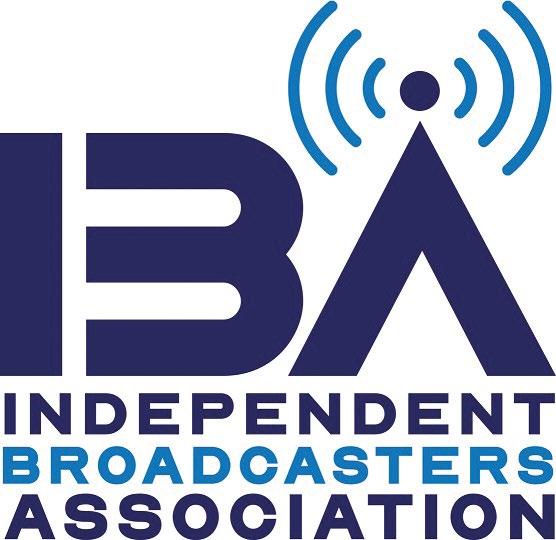
Ron Stone

analysis of members’ operations. It’s even exploring the possibility of creating its own app for car dashboards and its own real-time, app-based ratings service.
“I want to know that when our generation hands it over [to the next generation], it will be in good shape,” Stone said. “But it takes every independent to make that happen.”
The website is http://iba.media.
